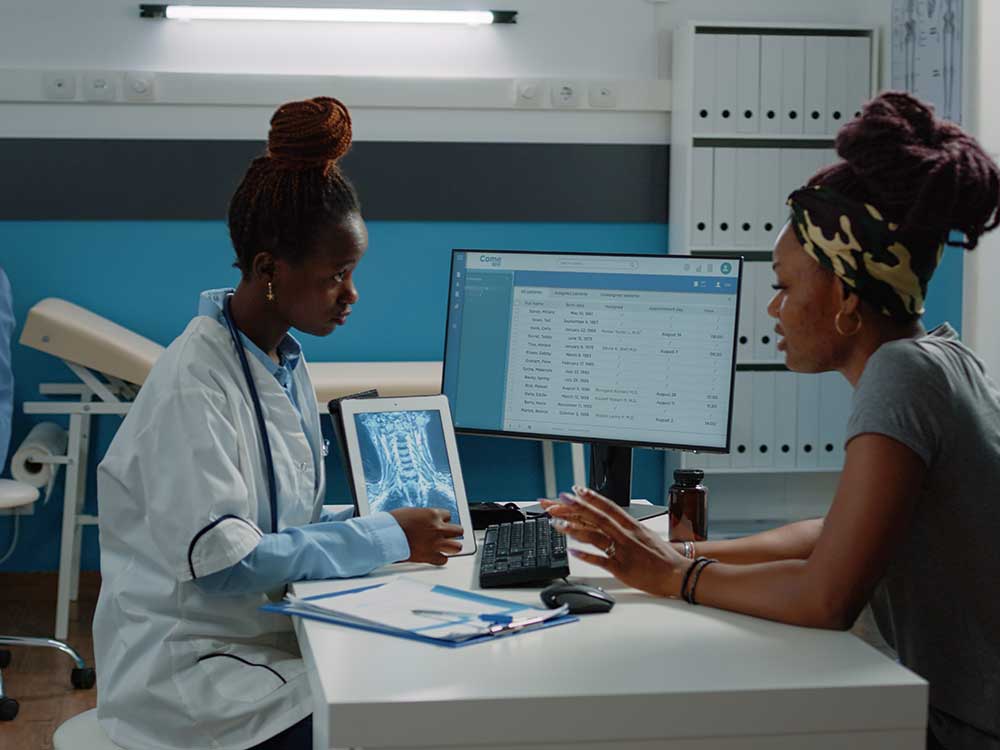Best Practices in Medical Management for Improving Effectiveness and Lowering Costs
In the ever-evolving landscape of healthcare, the search of ideal techniques in clinical management is extremely important for improving performance and suppressing expenses. By integrating innovative modern technologies such as digital health records and telemedicine, healthcare service providers can improve operations and enhance person care. However, modern technology alone is not a remedy; optimizing resource allotment and cultivating collaborative interaction among treatment groups are just as essential (medical administration). As companies make every effort to balance quality and price, what strategies should be focused on to achieve these dual goals? The responses to these concerns hold the secret to an extra lasting medical care system.
Leveraging Advanced Technology
The integration of digital remedies right into health care systems has changed the way centers operate, improving processes and boosting individual care. By centralizing person info, EHRs eliminate the demand for troublesome paperwork and promote smooth communication amongst health care service providers.
Telemedicine is another technical improvement that has changed client communication. It uses benefit for both people and health care specialists by allowing remote consultations, which can decrease the need for in-person visits and maximize appointment organizing. Furthermore, telehealth systems can extend medical care access to country or underserved locations, bridging voids in care shipment.
In addition, making use of Artificial Knowledge (AI) and device understanding is becoming significantly prevalent in anticipating analytics, enabling early discovery of possible health problems and even more informed decision-making. These innovations, when incorporated properly, can improve diagnostic precision and individualize client treatment strategies, inevitably resulting in improved medical care outcomes and operational effectiveness.
Optimizing Source Allocation
By strategically managing resources such as employees, tools, and funds, health care facilities can substantially boost their functional efficiency, boost patient results, and minimize unneeded expenditures. The first action in enhancing resource allocation involves performing a detailed assessment of existing possessions and identifying locations where resources may be underutilized or exhausted.
Focusing on resource allowance based on person needs and solution needs is important. Carrying out adaptable staffing models can likewise maximize labor resources by changing employees appropriation in reaction to rising and fall patient volumes.
Monetary sources should be carefully checked and allocated with calculated insight to sustain both short-term operational requirements and long-lasting institutional objectives. This consists of investing in training programs that enhance personnel proficiencies and taking on energy-efficient techniques that reduce operational expenses (medical administration). Inevitably, an optimized resource appropriation strategy fosters a sustainable medical care setting that is responsive, efficient, and economically prudent
Streamlining Operations Procedures
When medical care facilities aim to enhance functional performance, simplifying process procedures ends up being an essential focus. Reliable operations lessen redundancy, remove unneeded actions, and boost control among healthcare professionals. This approach not only speeds up service shipment however also boosts the top quality of individual treatment.

Following, technology combination plays a significant function in streamlining process. Carrying out electronic wellness records (EHRs) and digital physician order entrance (CPOE) systems lowers paperwork, lessens human mistake, and ensures info comes to all relevant workers. Furthermore, leveraging telemedicine systems can simplify patient examinations and follow-ups, lowering the strain on physical infrastructure.

Ultimately, streamlined operations bring about set you back decreases and enhanced individual fulfillment, promoting a much more sustainable healthcare environment.
Enhancing Information Monitoring
Structure upon streamlined workflows, optimizing information management comes to be an essential element beforehand healthcare management. Reliable data management systems are crucial for keeping precise patient documents, enhancing decision-making, and guaranteeing conformity with governing requirements. By implementing durable data management remedies, health care facilities can boost the quality of patient treatment while at the same time reducing functional expenses.
One key element of improving information monitoring is the see combination of advanced digital health and wellness record (EHR) systems. These systems promote the seamless exchange of person info across different divisions, lowering duplication of tests and lessening errors. A properly designed EHR system sustains data analytics, making it possible for doctor to determine fads and make notified choices regarding individual treatment.
Moreover, securing person data is vital. Adopting extensive cybersecurity actions, including encryption and routine audits, makes certain the integrity and privacy of delicate details. This not only safeguards individuals yet also preserves the organization's online reputation.
Purchasing team training is another crucial factor. Educating health care experts on information monitoring practices enhances their ability to efficiently use innovation, bring about boosted person outcomes. To conclude, enhancing data management through advanced technology and comprehensive training is important for accomplishing effectiveness and cost reduction in medical management.
Fostering Collaborative Interaction
A critical part in progressing clinical management is promoting collective communication among medical care specialists. Efficient communication is critical for guaranteeing seamless person treatment, enhancing treatment outcomes, and minimizing mistakes. By motivating open dialogue and coordination throughout multidisciplinary groups, health care organizations can enhance their functional effectiveness and minimize unnecessary costs.
Central to this approach is the assimilation of interaction modern technologies such as electronic health documents (EHRs) and safe messaging platforms, which facilitate the quick exchange of vital client info. These tools enable doctor to accessibility and share information in real time, making certain that all staff member are informed and straightened in their decision-making procedures. Furthermore, normal group meetings and interdisciplinary rounds can further advertise a culture of partnership and accountability.
Educating programs concentrated on enhancing communication skills are likewise necessary. Ultimately, fostering collective check this interaction leads to enhanced health care shipment and expense financial savings.

Conclusion
Incorporating innovative technology, such as electronic health documents and telemedicine, along with maximized source appropriation and structured process procedures, is important for improving efficiency in medical management. Reliable information administration and promoting collaborative interaction amongst health care teams are essential for reducing redundancies and improving care top quality. By focusing on precautionary care and taking part in top quality enhancement initiatives, healthcare companies can accomplish considerable cost financial savings and enhanced client outcomes, therefore making sure sustainable medical care shipment in an increasingly intricate atmosphere.
Comments on “A Total Guide to Medical Administration Certifications and Qualifications”